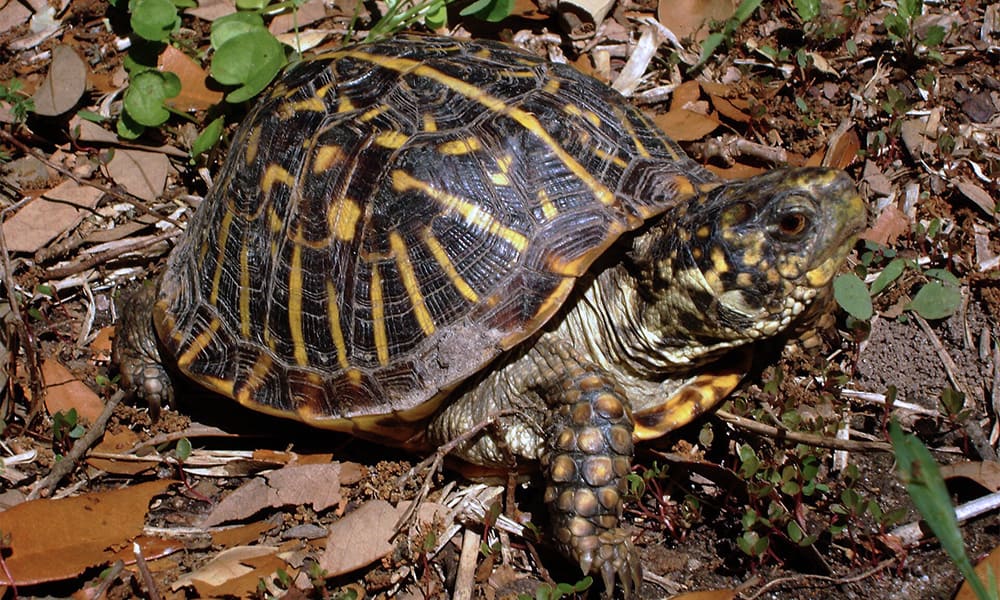As a kid growing up on the East Coast of the United States, I grew up a huge fan of the eastern box turtle. They’re a mostly terrestrial species of that you can find in the forest, in your lawn or crossing the street. It turns out that Costa Rica has its own version of this turtle. Let’s meet the ornate wood turtle.
The ornate or painted wood turtle (Rhinoclemmys pulcherrima) is a turtle with a mess of Spanish names. En español, it’s known as the tortuga roja (red turtle), tortuga de bosque (forest turtle) or tortuga pintada (painted turtle), among others.
This little turtle is described as painted and ornate because it’s pretty. Their highly domed carapace (top shell) is spectacularly decorated with an orange, brown, black and yellow intricate pattern. The interesting coloration and patterns continue onto their little legs and beaked heads. They’re about the same size as my old friend the eastern box turtle, coming in about 8 inches long for the male and 6 inches long for the female.
In Costa Rica, the ornate wood turtle is mostly found in Guanacaste but its range stretches over towards San Jose. They are mostly terrestrial, found in relatively dry habitats, in forests and habitats affected by humans, like agricultural areas. While you’re probably most likely to spot one slowly trudging about on land, they are also at home in the water.
Ornate wood turtles are omnivorous, but the majority of their diet seems to be made of plant materials. They consume plants, fruits, flowers and seeds with a side of worms, grubs, and any other small organism that doesn’t run from its beak fast enough. In turn, they contribute to Costa Rica’s food web by being eaten by birds of prey, herons, large mammals and Costa Rica’s two crocodilian species, the spectacled caiman and the American crocodile. Most of this turtle predation happens in the early stages of their lives, with predators taking many more eggs and juveniles than adults.
Since I live in Guanacaste and most of my camera trap projects over the years have been in that area, I see these pretty little turtles frequently. It’s always a fun surprise to find. Usually I’m walking between cameras, cutting through brush or tall grass, and I’ll happen upon one. If I’m not in a big hurry, I’ll take a seat and hang out with it for a while, just enjoying its presence.
It’s interesting that the literature says that the adults are infrequently eaten, because I come across empty ornate wood turtle shells just as frequently as I come across living ornate wood turtles. Maybe they’re getting eaten as adults more frequently than we think or maybe their empty shells last a long time in the environment, giving me more time to find them.
Every once in a great while, I will record an ornate wood turtle with my camera traps. If I remember correctly, the turtle itself has never set off the camera. It’s always another animal’s movement that triggers the camera and a turtle happens to be within the frame. You will have to look very closely at the video below to actually spot the ornate wood turtles, but also keep an eye out for the animal that is responsible for triggering the camera.
About the Author
Vincent Losasso, founder of Guanacaste Wildlife Monitoring, is a biologist who works with camera traps throughout Costa Rica. Learn more about his projects on facebook or instagram. You can also email him at: vincent@guanacastewildlifemonitoring.com

